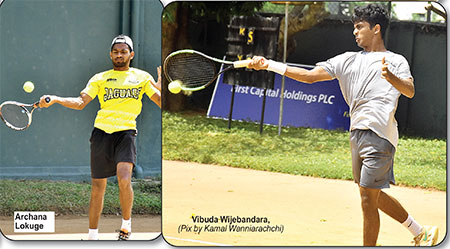Sports
Susantha reveals key to success of Ratnayake Central
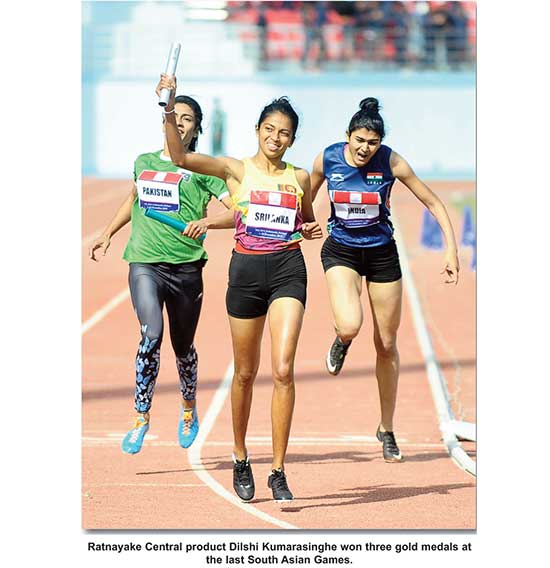
by Reemus Fernando
Dilshi Kumarasinghe, the golden girl of the last South Asian Games had been permitted to stay in the hostel of Sports School Ratnayake Central College, Walala for months after completing her education until she found employment, because of the far-sightedness of Central Province authorities, both past and present, Susantha Fernando, who trained her to win three Golds at the regional event, revealed in an interview with The Island. That was a decision the authorities of other Sports Schools or seats of learning, bound by various rules and regulation, would hesitate to take, he said.
With the restructuring and reinvigorating of Sports Schools in the country being discussed by the Ministry of Education and the Ministry of Sports, The Island interviewed Susantha Fernando, the coach behind the success story of Ratnayake Central Walala, the most successful Sports School of the country.
Fernando who culminated his three decades long coaching stint with t
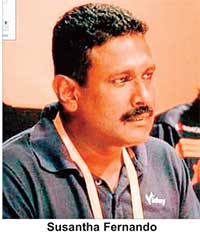
he Sports School recently, revealed that the special place of prominence given to sports by the Central Province education authorities and the individualized training plans were among the reasons behind the unprecedented success of Ratnayake Central.
Ratnayake Central dominated track and field sports for more than two decades. If title victories are of any indication to the success of a Sports School, then there was no school that could even come closer to beat the records set by Ratnayake Central. There are three major Schools Athletics Championships conducted yearly, namely the Sir John Tarbet Senior, All Island Schools Relay and the All Island Schools Games Athletics. They won both the Boys and Girls titles together in these championships on an unprecedented 19 occasions. Under Fernando’s stewardship Ratnayake Central athletes have gone on to win at Junior Asian Athletics Championship (seven medals), Asian Youth Games, Youth Olympic (1000m B grade 3rd), South Asian Junior Athletics Championships (7 medals at the last meet), Asian Athletics Championships, Asian Schools Games, South Asian Games (four goalds at the last edition) and many regional international events apart from representing the country at many World Youth, World Junior, Asian Championship, World Championships, Commonwealth Games and Asian Games. Here are the excerpts from the interview The Island had with Fernando.
What makes Ratnayake Central different from other Sports School?
“Ratnayake Central was selected as a Sports School because we performed better than any other school in the Central Province. We are the only Sports School that is run by Provincial administration. When the school was established Palitha Elkaduwa, the former Secretary of Education of the Central Province played a special role. The central province circular on the Sports School was a very strong one. There were two other sports schools in the Central Province (Poramadulla Central and Weera Keppetipola NS, Akuramboda). But they were taken over by the Ministry of Education later. The officials who made the school a Sports School understood the importance of sports. Even today the Department of Education of the Central province has no hesitation in going out of the way to help Sports programmes. We were also lucky to have a sports loving Director of Education in Thilak Ekanayake,” said Fernando.
Asked to be more specific Fernando compared and contrasted Ratnayake Central with other sports schools.
“Generally Sports Schools provide scholarships and recruit athletes for grade eight. But if we identify a future prospect who is in a higher grade we could take the athlete for that higher grade if there is a vacancy. That is not so with the Sports Schools that are under the Ministry of Education. They are strict. Dilshi’s case is another example. We knew that she is a future prospect. We could keep her in the hostel for months after she finished her Advance Level until she found employment in the Army. She went on to win three golds at the South Asian Games. We could do that because the Central Province Education authorities understood the need. I don’t think that would be possible with any other Sports School.”
Media had been highlighting the absence of a 400 metres track at Ratnayake Central for years. How could the school still perform better than the schools which had facilities.
“I had a plan for every athlete. At the school we maintained files for every athlete. There were over 70 files every year. The individual training plans were the secret. When others take leave for three months during school vacations we continued training. We conduct special training. Go for high altitude training. We send home sports scholarship holders for only ten days during vacation. My recommendation for other Sports Schools too is to continue training with probably ten days of leave during the school vacation. True we did not have a proper track. Not even a proper 200 metres track. The 200 metres track at Ratnayake Central has a 55% bend which is harmful for athletes. From 2018 we could take athletes for training to Digana where there is a good 400 metres track.
How do you compare the financial support Ratnayake Central received with other Sports Schools?
“The Central Province department of education has been good enough to understand the need for funds to run a proper programme. We’ll just take the case of competitions. You have to spend a lot of money on transport and food during competitions. There was no restriction on funds for Ratnayake Central in meeting expenses on transport or food for athletes. The other Sports Schools are given only rupees 25,000.00 for the entire year for transport and food to take part in meets. You have to travel to three or four national meets per year. It is important that the athletes we train take part in these meets and they are provided proper transportation, food and lodgings. I have seen sports officials of Sumana Balika (Sports School) preparing meals for their athletes when they go for national meets to save funds. That is pathetic.”
Central Province also increased the allowance paid to sports instructors to encourage them and provide a substantial scholarship money for athletes, when the sports instructors under the Ministry of Education receive a meager amount of rupees 1,000.00 monthly as an allowance.”
The Central Province education authorities promoted Fernando to the Assistant Director of Education – Sports and Physical Education post of the Wattegama Zonal in 2003 and was also responsible for monitoring sports progress of the zone which became one of the best zones of the country. Here are his views on the monitoring process of Sports Schools.
“There should be a proper monitoring system for Sports Schools. Some of the Sports Schools in the country became defunct because there was no proper monitoring system. There should also be qualified individuals to do that. Qualified officials who can advise the coaches of the Sports School and who could make recommendations on their coaching programmes. At present I don’t think that the Ministry of Education has enough qualified individuals to do that part.”
Many scholar athletes passing out from Ratnayake Central have gone on to become physical education teachers. How did Ratnayake Central looked after the education of scholar athletes.
“We provided free tuition to athletes after school when it was necessary. And there was continuous monitoring of the progress they made in education. We hardly had disappointments when results of exams came. Many have become Physical Education teachers. Currently there are over 400 physical education teaches who had their education at Ratnayake Central. They are serving at different schools. There are also good number of athletes who have gone on to become bank managers, Assistant Directors of Education to managers of leading private firms. For those who persevere a career in athletics there should be a system to look after them after they leave Sports Schools. The future prospects who are identified at Sports Schools should be looked after. The Sports Ministry should take the responsibility of these athletes after they leave schools.”
Often there are administration deadlocks between sports officials and principals leading to sports being given secondary status at schools. Fernando said that there were no such impasses at Walala but insisted that sports instructors should have some authority at Sports Schools. “In my opinion the head or the sports instructor of a Sports School should have some authority for him to run a successful programme.”
Fernando had a long stint (30 years) at Walala with the school and the old students association continuing to insist on acquiring his service. He continued as the head coach of Ratnayake Central while also functioning as the Assistant Director of Education – Sports at Wattegama Zone. This is his opinion on transfers.
“Teacher service requires teachers to be transferred according to vacancies that exist. There should be some leniency with regard to sports instructors. You cant change heads and expect good results in sports. There should be continuity for a training programme to be successful.”
He also insisted on the need to recognise the achievements of coaches and the need to provide suitable jobs for those passing out from would be Sports Universities as there is lack of suitable jobs even for those passing out from Universities with Sports Science and Physical Education Degrees at present.
While he has received praise for the yeoman service he has rendered to the field of sports, some national coaches have directed criticism at him citing that his trainees who had excelled at school level had not replicated those performances at senior national level.
“A coach can only help an athlete improve 30% of his performance level. Good performances are a combination of natural ability and proper coaching. A wast majority of athletes Ratnayake Central recruited were average athletes. Ratnayake Central is not situated in a town. Parents will opt for schools in Kandy when there is a choice between Ratnayake Central and a famous school in Kandy. Most athletes when they first came to the Sports School, were just winners at inter house meets, Divisional or Zonal meets. Inoka (many time marathon champion and first South Asian Games marathon medalist for SL) was just an inter house meet winner. She competed at national level for 20 years. I can give many examples. If there were special talents they had been trained accordingly to reach international level. For example Dilshi Kumarasinghe is a special talent and I am working on to help her reach top level. Indunil Herath (current national 800 metres record holder) was a long jump winner at Handaganawa when he was recruited. All athletes who came to Ratnayake Central underwent talent identification tests and later introduced to suitable disciplines which they had not even witnessed before. Herath had to leave the school for reasons beyond my control. Hadnt he successful? Raju (Geethani Rajasekara- first Sri Lankan marathoner at Olympics, trained by Sajith Jayalal after she left for Colombo) went to Colombo after marriage. Numbers will answer the critics. If those critics can tell of a single school which had produced more athletes to Senior National Athletics teams than Ratnayake Central then there should be some truth in their criticism. Ratnayake Central is the school that has produced the highest number of athletes to National Teams.”
- News Advertiesment
See Kapruka’s top selling online shopping categories such as Toys, Grocery, Flowers, Birthday Cakes, Fruits, Chocolates, Clothing and Electronics. Also see Kapruka’s unique online services such as Money Remittence,News, Courier/Delivery, Food Delivery and over 700 top brands. Also get products from Amazon & Ebay via Kapruka Gloabal Shop into Sri Lanka.
Sports
Imran steals the show!
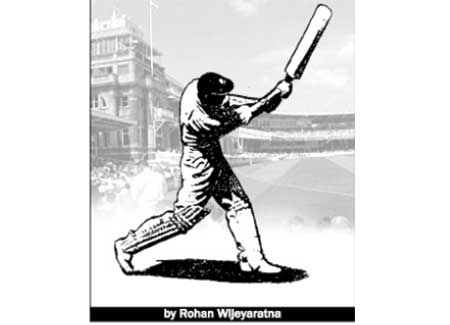
(This article by The Island’s respected cricket columnist Rohan Wijeyaratne first appeared in these pages 16 years ago; on the 11th of June 2005. As World Cup winning former captain and current Prime Minister of Pakistan Imran Khan has just visited the island, we reproduce this article in today’s edition)
In my youth – which is to say, quite a long time ago – I would often go to the YMCA canteen for a snack and a tea after whatever business that brought me to the Fort. Doing the same recently more for old times sake than anything else, I saw a familiar figure ahead of me heading in the same direction. Quickening my step and drawing abreast, I introduced myself to the gentleman concerned. He was none other than my old school English teacher, V. Thanabalasingham.
Not just a teacher, but an Institution
Those of you who may have passed through the portals of Ananda College during the 1960s and the early 70s and no doubt been well rounded in many ways, will admit to a man that when it came to the teaching of English, the name Thanabalasingham held no peer. In his prime, he was not just a brilliant teacher but an Institution. And volumes wouldn’t suffice to do him justice – such was the impact he made on all whom he touched, be it with the brilliance of Thackeray, Dickens, Chaucer or the Direct Method English Course that served as our bread and butter in English education at the time.
Another, from a different mould
Another teacher from an entirely different mould was Upali Ratnayake, now the Executive Director of CIMA. At the time he was introduced to us at the ‘A’ level stage, he appeared to our free spirits a cut above the rest. He acquired this status by doing exactly the opposite of what he was expected to do, which was to teach us English as a preparatory step towards an easier passage through University. Upali Ratnayake actually taught us nothing. Yet we learnt a good deal off him, discussing almost everything other than the subject he was paid for! His most endearing virtue was that he never spoke to us from a great height. And in that process, he taught us one of the most lasting lessons in life.
Several decades later, I nearly fell off my chair to receive a phone call from him inviting me to the BMICH on the 28th of May where Imran Khan and Kumar Sangakkara were due to speak at the CIMA Global Leaders Summit. The topics for discussion were “Passion for Perfection” and “Ordinary people in extraordinary acts.” The topics and the speakers seemed irresistible. And so I went.
What a speech!
I wasn’t disappointed. Neither were hundreds of others present. And predictably, Imran stole the show. Blessed with a presence that would have put any Grecian god to second class status, this tall, elegant and immensely handsome man spoke with such brilliance, clarity and articulation, the end result was as gripping as it was inspiring. In his wake, those who followed appeared cumbersome and dreary, almost like how Kenny Mackay would appear after the brilliance of a vintage Sobers or a Dexter! Kumar Sangakkara having to make do with less time than was his rightful share went largely unheard, tending to speak more to his fellow panelists than his audience. He will learn. As a probable hot contender to the top post after Atapattu, there will be many more occasions where he will be required to speak in public.
“Ambition must be upgraded, never downgraded”
Imran was of the view that all humans were endowed with limitless potential. Their limits if any, were often self imposed. Those who achieved extraordinary heights were those who dared to go beyond their self imposed limits. They thought big, dreamed big and did not allow their limitations to get in the way of achieving their dreams. He drew parallels from his own experiences in cricket, his cancer hospital project and his involvement in national politics to establish the point.
The four secrets
Starting with cricket, and drawing parallels with other legends including Zaheer Abbas, Imran stressed the need for a clear vision, the hunger to succeed, the willingness to sacrifice and self belief as being the four secrets to achieve one’s vision. Self belief was a factor which Abbas, despite all his God given gifts, had in very short supply. Imran, on the other hand, was full of it (sometimes foolishly!), because he never thought he ever could lose a game each time he stepped on to a cricket field. He gave many examples of it, including the victories against the might of the ‘invincible’ West Indians in 1986 against all odds. And that, despite having requested and got, ‘neutral’ umpires in a home series in Pakistan! He just wanted to make sure that when they won, there would be none to say that the umpires had anything to do with it!
Drawing from examples of his own life, Imran said that in all one’s life, one would hear others say why something cannot be done. That if accepted, would be the start of everyone’s downward spiral. Ambition he said, must be upgraded, never downgraded. And the more you pit your mind against the winds that resist you from reaching your ambition, the stronger your mind will become. Therefore, ambition must take precedence over everything. And towards achieving that, one should be willing to sacrifice anything. “Compromise” said Imran “for your vision, but never ever on your vision.” Great words!
Why the 3rd world is the 3rd world!
Relating what made him take to politics, Imran said that the problem with the third world was that the ruling elite would put itself above the law and deprive the ordinary folk of any justice. Hence his political movement was primarily meant to establish the rule of law in his country, where the weak and the strong were equal in the eyes of the law. “No society in the history of mankind has ever progressed without the rule of the law. The reason why the third world remained the third world was because it had very poor rule of the law. The elitist types did whatever they wished and got away with it, while the common man and the small and medium industrialist were all deprived of justice.” None could have spoken a truer word!
The ways of the mafia
Imran went on to say that when fighting for the rule of Law, one would be pitted against entrenched vested interests; the most powerful elite in the country. These were those who could buy justice. In Imran’s case, these were men who were also his good friends. Yet he preferred to take on the mantle of a social pariah instead, preferring to stand steadfast to his vision. The mafia usually reacts in such situations in either of two ways. They would either eliminate you or make you join the system. Just five months after his party was formed, he was offered 30 seats in Parliament out of 270. Imran refused, because he realized he had no chance of winning against entrenched political families that controlled his country. He knew the moment he joined them, he would need to compromise with his vision. So he refused, and got wiped out at the elections.
Refusing the Prime Ministership of Pakistan
When General Musharaff took over with Pakistan’s fourth military dictatorship in its brief history, he made all the right noises such as ridding the country of “sham” democracy and so on. No sooner Musharaff formed his own party, Imran was yet again invited, this time to become the Prime Minister of Pakistan. “But when I discovered that joining his coalition meant joining the biggest crooks in the country,” he had no difficulty in refusing. He was chided for his decision by many who argued that he could have joined and then fixed things up. But Imran said the decision was easy to make, as his vision was very clear. And it was one’s vision that decided when to compromise and when not to.
Imran’s vision
Imran’s vision was an independent and credible judicial system in Pakistan. So he asked himself the question, could General Musharaff afford an independent judiciary? The answer to him was obvious. If such a judicial system prevailed, most of the powerful men in his country would be tried for treason under article six of the country’s constitution. The sentence for treason was death. And he was therefore convinced that neither Musharaff, nor those around him could afford an independent and credible judicial system. And so, with his firm “No” Imran watched his party being destroyed yet again, to one seat, in parliament. This time it was by General Musharaff himself.
(To be continued tomorrow)
Sports
Spinners give India early advantage in third Test
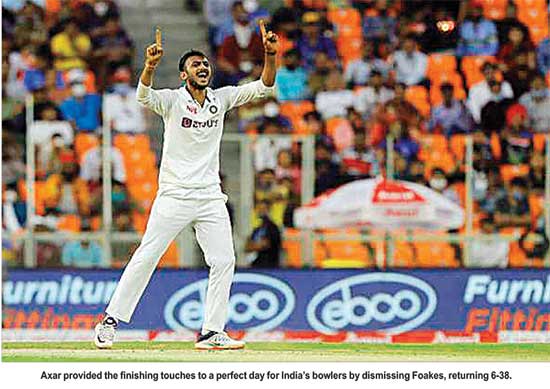
Indian spinners shot England out for just 112 inside two sessions with Ravichandran Ashwin and Axar Patel sharing the spoils after pacer Ishant Sharma opened the floodgates in his milestone 100th match on the opening day of the day-night third Test in Ahmedabad yesterday.
England were all out for 112 in 48.4 overs in the second session on a spin-friendly Motera pitch with Patel (21.4-6-38-6) grabbing his second five-for in his second Test while Ashwin (16-6-26-3) took three.
Openers Rohit Sharma (5) and Shubman Gill (0 ) negotiated five overs to take India to five for no loss at the dinner break.
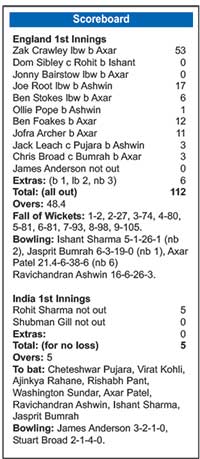 Gill, however, survived after TV umpire ruled him not out in the third over after England claimed for a catch.
Gill, however, survived after TV umpire ruled him not out in the third over after England claimed for a catch.
Ishant, only the second Indian fast bowler after Kapil Dev to play in 100 Tests, fittingly took India’s first wicket in the third over as he dismissed opener Dominic Sibley for nought.
Thereafter, it was all an Ashwin and Patel show as the duo bamboozled the England batsmen to complete the submission, except for the other opener Zak Crawley, who hit an eminently delectable half-century. Six English wickets fell in the second session.
England did not have any substantial partnership with the 47-run stand for the third wicket being the highest. They lost their last seven wickets for just 38 runs.
Crawley’s brilliance was, however, neutralised by the Indian spinners as England were left reeling at 81 for four going into tea after an exciting opening session in the pink ball Test.
Two wickets fell in as many overs after the resumption of the second session, with Ashwin and Patel taking one each, to reduce England to 81 for 6.
Ashwin sent Ollie Pope’s (1) off-stump cart-wheeling with a beauty of a delivery, bowling round the wicket, before Patel trapped Ben Stokes (6) LBW in the next over with a ball that spun in.
Jofra Archer (11) did a tad better as he hit a four in the second ball he faced and another boundary off Ashwin. But, Patel had him soon, cleaning up his off-stump to send England innings into a mess.
England’s rapid slide continued with Jack Leach edging one to the gully where Cheteshwar Pujara took a low catch off Ashwin, though the TV umpire took time to confirm the decision.
Crawley’s effort was the only silver lining for England. Having missed the first two Tests due to a freak wrist injury, the stylish right-hander’s driving was elegance personified as he hit ten boundaries during his 84-ball 53.
Sports
Top players secure third round places
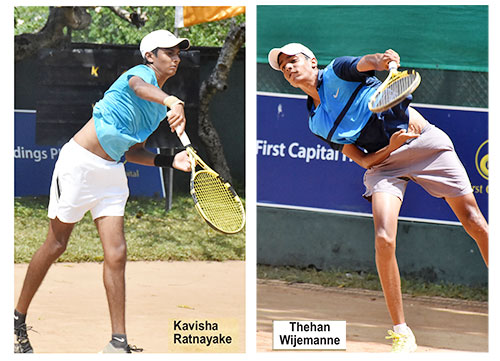
SSC Open Ranking Tennis
Thehan Wijemanne, Kavisha Ratnayake, Vibuda Wijebandara, Savith Weerasinghe, Kiran Viravanathan, Archana Lokuge advanced to the men’s singles third round at the SSC Open Ranking tennis tournament on Tuesday.
Some of the leading players fighting to improve on their impressive performances produced at the Tennis Nationals and the Colombo Championships during recent weeks knocked out their opponents easily to secure third round places.
